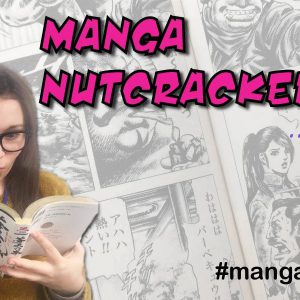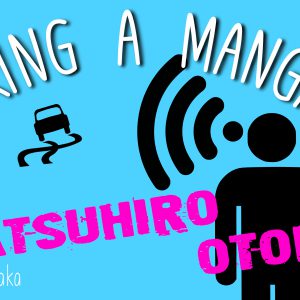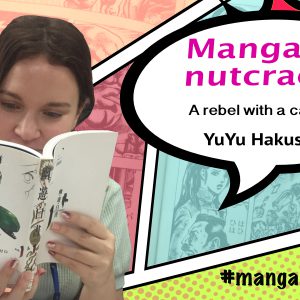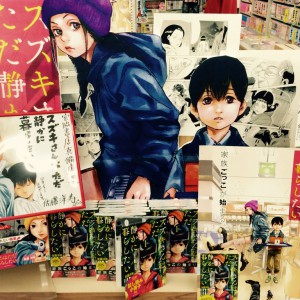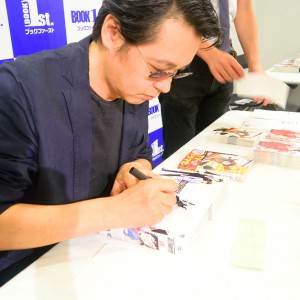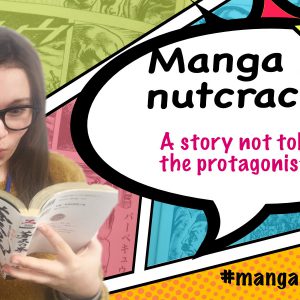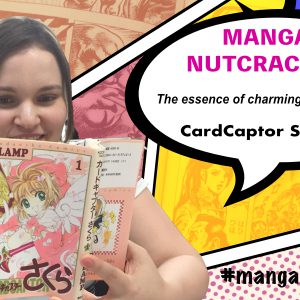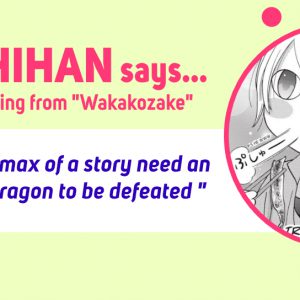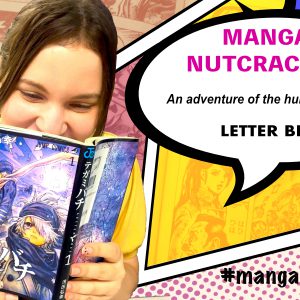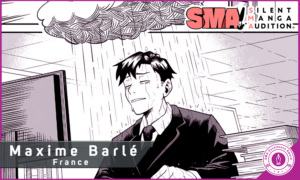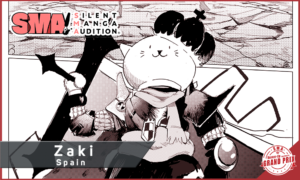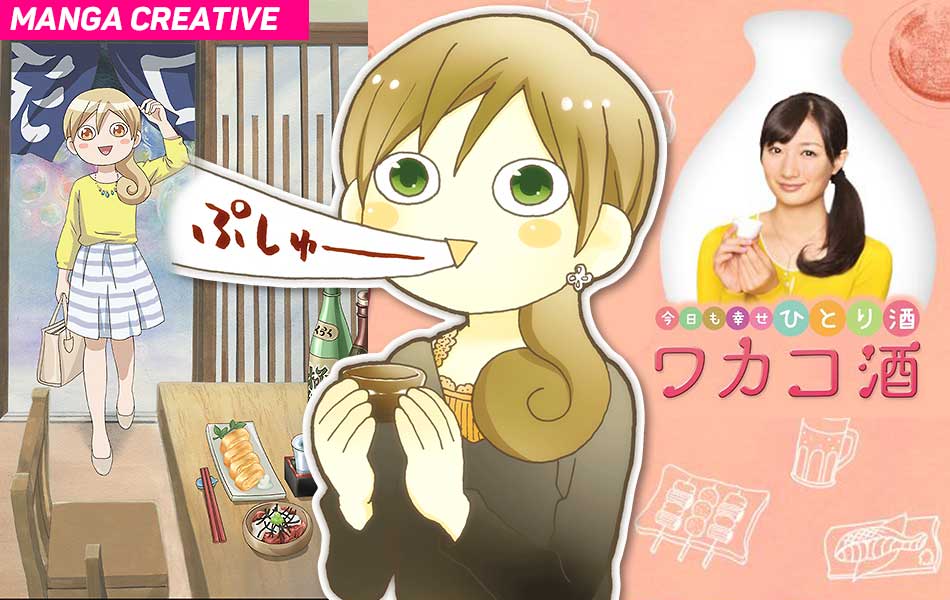
Hello everyone!
Manga Insider is back again after a one week break! My updates may become a little irregular, but please stay with me till the end!
Today’s theme is… Media Mix! By “media mix”, I mean “a series expanded onto different forms of media”. Like when a manga becomes an anime, or an anime becomes a novel or a novel becomes a game… Comic ZENON is also involved in these kinds of projects. However, it’s probably difficult to imagine what exactly goes on behind the scenes. For example, when an anime adaption is announced, haven’t you ever thought “Wait, when did this start!?” Today, I’m going to be asking Mr. Akiyama of the ZENON Editorial Team just how media mix works! He’s been involved with many of the anime and drama adaptions of Comic ZENON manga, such as Gifu DōDō, Angel Heart, The Mail-Order Prince, and Wakako-Saké. Additionally, he was also in charge of the manga version of Kaitakusha-tachi, a drama that ran on NHK (Japan Broadcasting Corporation – Japan’s national public broadcasting station). I’m sure he’ll be able to explain to us the steps and background of this process!(Mr. Akiyama previously talked to us about “Mochikomi” and “Manga Awards”. If you would like to read those articles, follow this link!)
Part 1: From Manga to Other Media
When a ZENON manga is expanded onto another form of media, it’s usually because a production company read it, thought it was good, and sent us an offer. There are occasional cases of publishers going to the production company, but that doesn’t happen much at ZENON. After receiving preliminary permission from ZENON, the production company will draw up a proposal, which will be reviewed within their own company. Just as we are responsible for creating manga, the production company is responsible for their own contents. So just like ZENON, they’ll internally review the proposal, and they can only move on to the next step unless they get the consensus. What if the proposal is rejected by the higher-ups in the production company? In this case, no further steps will take place, and the companies will simply back out. It’s not unusual for us to receive an offer, accept it, but then never hear back from the production company. On the other hand, if their proposal goes through, then they can start looking for sponsors, and decide the basics, such as the broadcasting period and time slot. (Without these basics, then they can’t make any offers to potential staff or cast!)
Tsukasa Hojo sensei’s ‘Angel Heart’ was turned into an anime series in 2005.
So everything really begins with the written proposal. To kick off the media mix process, the written proposal has to be approved!
The next question is: how much say do the editors and the artist have in the new product?
At Comic ZENON, our basic belief is “The manga belongs to the artist”. So Mr. Akiyama will do his best to fulfill any requests that the artist may have. Apart from that, he will help with the fundamentals, but leave the details to the production team.
Although it’s easy to lump every form of entertainment together, the reality is that manga, anime, movies, stage productions, TV dramas and novels are all fundamentally different from each other. The production teams are professionals in their own field. On the other hand, we might be professionals in the field of manga, but are amateurs when it comes to other forms of media.
That’s why we believe that we should leave things to specialists, to achieve the “happiest” results. As we say in Japan: “Every man to his trade”!

‘The Mail-Order Prince – Iida Yoshimi’ by Shiho Takase sensei had it’s drama adaptation in 2013!
In most cases, once the project is confirmed, the editors and the production company staff (the producer or director) will have a meeting, and discuss the manga in detail. For example, the character’s personalities, how they would act like, the principle of the manga, the message behind the story etc… We do our best to ensure that the production staff have a deep understanding of the manga. And through repeated meetings and discussions, we also build a relationship of trust, which will aid in making a better end product.
Sharing a character image, creating a story… in this sense, these meetings are very similar to the ones that editors have with the manga artists.
Provided that those involved love the story, as long as the characters are rightly interpreted, there shouldn’t be any major problems. The worst thing for us to do is to micro-manage every tiny detail, as this will tie the producer’s hands, and result in a failure. After all, it is a rare opportunity to convert a story to another new form of media and see how it turns out to be like, Mr. Akiyama feels that we should give the production team some room to maneuver. Let them use their media in an effective way.

‘Wakako-Saké’, a manga by Chie Shinkyu sensei, has two successive media-mix project: a TV drama (2014), and a TV anime (2015)!
You won’t always be 100% satisfied with the results. But it’s never a complete waste. After all, using different forms of media draws in new fans, who wouldn’t otherwise know about the story, and as long as you’ve made some of the fans happy, it’s a job well done.
Part 2: From Other Media, to Manga
One of the basic policies at Comic ZENON is to let the artist call the shots when making manga. So we very seldom accept requests to “comicalize” an anime or drama. However, if an artist wants to do it, then we’ll support them to the best of our ability. A comicalization project might start with us receiving a request from another company, or we could initiate it and make the offer. In the case of the manga “Hatsukoi -Kaitakusha-tachi”, which Mr. Akiyama was in charge of, we received a request from the NHK.
Based on the original “Kaitakusha-tachi”, Mitsuru Osaki sensei drew a manga named ‘Hatsukoi – Kaitakusha-tachi- ‘, both in 2012!
Both parties believed that the best way to ensure success was to run the manga and drama at the same time. So the manga’s production schedule was calculated backwards from the drama’s release date.
This kind of “synchronization with the broadcasting time” often happens when manga become other media. With both Wakako-Saké and The Mail-Order Prince, we modified the release dates so they would coincide with the dramas. Naturally, this can result in an extremely tight schedule, but we do our best for the readers!
“Hatsukoi – Kaitakusha-tachi” (First Love – the Pioneers) was the manga version of “Kaitakusha-tachi”, a drama broadcast on NHK in 2012, on the 40th anniversary of the restoration of diplomatic ties between Japan and China. It’s the story of the Japanese immigrants who moved to China on the eve of the Pacific War.
With regard to the manga, NHK was very strict about historical accuracy. Some of the Manchurian immigrants are still alive, and it’s a very delicate period of history. An error might result in someone taking offense. This may seem restrictive, but actually this drive for historical accuracy was very helpful for creating the manga. When Osaki-sensei wasn’t sure about something, he could always go to the NHK production team for advice. The extra input was a big help! Supported from the side by the video professionals, Osaki-sensei and Mr. Akiyama tried their best to bring out that distinctive “manga” goodness. The result is that the manga version isn’t just a bland copy of the drama, it’s an exciting story in it’s own right.Those who want to create their own original manga might scoff at the idea of comicalization. There are some manga artists who feel that they do not want to do comicalization, since it makes them unable to express their own flavor.
But from the editor’s point of view, comicalization projects are a convenient system, which can be used for cultivating a manga artist’s abilities.
To grow as a manga artist, the best way is to get practical experience selling a story. A manga artist needs to consider what elements are necessary to sell the manga, and please as many readers as possible. When you look at a name drawn by a successful artist, you can tell at a glance that the name was drawn with the readers in mind!
The editors want the artists to first gain experience with another professional’s story. They can then use this experience later when they create their own original story. This is the aim of comicalization projects at ZENON.
Mr. Akiyama says:
“If you’ve never played in a match, then you have no idea what you can or can’t do. Going out onto the court is the most important thing. And if you can experience how great it feels to score points and win, then you’ll feel even more motivated in the future.”

The ‘Gifu DoDo’ series is a spin-off manga series based on Tetsuo Hara sensei’s “Hana no Keiji”. The anime series of “Gifu DoDo” ran in 2013!
Part 3 (extra): From the Web to Manga
Just like Hetalia and One Punch Man, it’s not unusual for an amateur series posted online to become a commercial manga, or for an amateur artist to go pro. In this case, the editors are careful not to smother the spark of creativity that made their work successful in the first place.One might ask “How can I do this myself?” To be honest, neither the editors nor the bookstore staff know the answer to that question. For instance, if two works are posted online, both with similar style and content, one might be hugely successful, while the other gets lost in the dark corridors of cyberspace. Here at Comic ZENON, we have some artists who were noticed because some doodles they posted on twitter went viral. What will go viral?… Who can say? That’s the mystery of the internet.
According to Mr. Akiyama, the only advice we can give is… “read the trends”. Here’s an example: In the 80s, at a time when the market was flooded with romantic comedies, our president Mr. Horie made it big by selling something that was the complete opposite of a love comedy… Fist of the North Star! This timing was perfect, because the market was ready for something fresh. Travel in wide social circles, and pay attention to the times that you live in. Find something that will hit home with your audience, and debuting on the internet might be possible! You can sum it all up as “Media Mix”… but it’s a very deep and profound world. If reading this article helped make things even a little bit clearer, then my job here is done! Are there any series that you think were very successfully expanded to another format? Or any series that you would like to see expanded? Comments, opinions, questions… all are welcome! [catlist name=”MANGA INSIDER MAYU” thumbnail=”yes” thumbnail_size=160 content=”no” date=”yes” dateformat=”M j, Y G:i” template=page_list]




